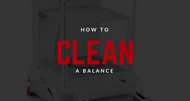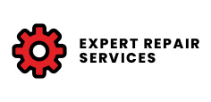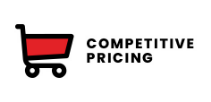How to Clean a Balance
Posted by Jon M on Jul 19th 2018
It is important to keep balances clean. It is just as important to clean them properly. In fact, some industries have standards and regulations in place that require cleaning SOPs. Keeping your analytical and precision balances clean helps to ensure accuracy, prevent contamination and extend the life of the instrument. In this blog, I'll outline how to clean a balance and what products you can use.
What You'll Need
The first crucial step is to have everything you need to do a proper cleaning. Balances are delicate instruments with a lot of small moving parts. Here are some of the cleaning products and tools we suggest may come in handy:
- Microfiber towels for wiping down surfaces
- Precision soft bristle cleaning brushes to brush away debris
- Commercial grade glass cleaner for draft shields and surface cleaning
- 70% isopropanol or ethanol for tougher stains and stickers
- Mild cleaning detergents such as dish soap for general cleaning of housing
- Plastic tip precision scrapers for crevices and corners
Cleaning the Balance Housing
Most analytical and precision balances have plastic housings. Plastic does not do well with strong cleaners such as acetone so it is recommended to go with a mild detergent. Use the microfiber towel to wipe down the whole housing. Tougher stains can be removed using the isopropanol or ethanol. I've found in my own experience that glass cleaner also works really well, even on tougher stains.
Be careful not to tip the balance on its side or top when cleaning the bottom of the housing as this could potentially disrupt the calibration. If the bottom needs cleaning, I've always carefully held the balance just slightly in the air and gently wiped the bottom. This may not be necessary, but for the folks that are as particular as I am with these things, that is how I would approach it.
Cleaning the Display
You can generally get away with the mild detergent or glass cleaner when wiping down the display. Many balances have just a small screen that can be wiped down while cleaning the housing. For models with touchscreens, I recommend switching to a glass cleaner and gently wiping with a microfiber cloth. Just apply a small amount to the cloth. I would avoid spraying it directly onto the screen.
Draft Shield Cleaning
If you're dealing with an analytical or precision balance with a draft shield, you'll need to remove it to clean the internal weighing area. My personal preference is to clean the draft shield components after I've taken it apart from the balance. Wipe down the rails and frames with the microfiber towel and a bit of the detergent. You can also carefully wipe down the glass panels using the glass cleaner. Set all of the components aside until you are ready to reassemble.
Cleaning the Weighing Pan
Most balances have a stainless steel weighing pan. Stainless steel is quite resilient so it can handle most cleaners. However, it does not do well with strong acids. Avoid using acids to clean these components. Prior to wiping everything down, remove any dust or debris from or around the weighing surface. The brush and scrapers come in handy here. However, DO NOT brush debris into the hole where the weighing pan sets. This is where the load cell and other delicate components are. Dirt and debris, including powders, can cause binding issues and prevent the balance from working properly. Do your very best to carefully remove the debris with your brushes. Q-tips are also quite useful. A damp Q-tip can be used to pickup stubborn dust.
After removing all the grime, use your cleaning products to wipe everything down. Again, DO NOT get anything inside the housing. USP guidelines and other regulations dictate which types of cleaners to use to prevent contamination. Make sure you follow all necessary regulations and best practices.
Finishing Up
Once the balance is all clean and reassembled (where necessary), finish up with some spot cleaning if required. This is also a good time to check the balance to make sure that everything is still in good order. Verify the calibration is solid and that everything is working properly. Your balance is ready to use again!
NOTE: The cleaning procedure outlined above only a recommendation based on common scenarios. You should always refer to your owner's manual and follow manufacturer's suggestions. You must also follow regulatory standards where applicable. If you're unsure, you can contact a service provider and ask for professional advise.





